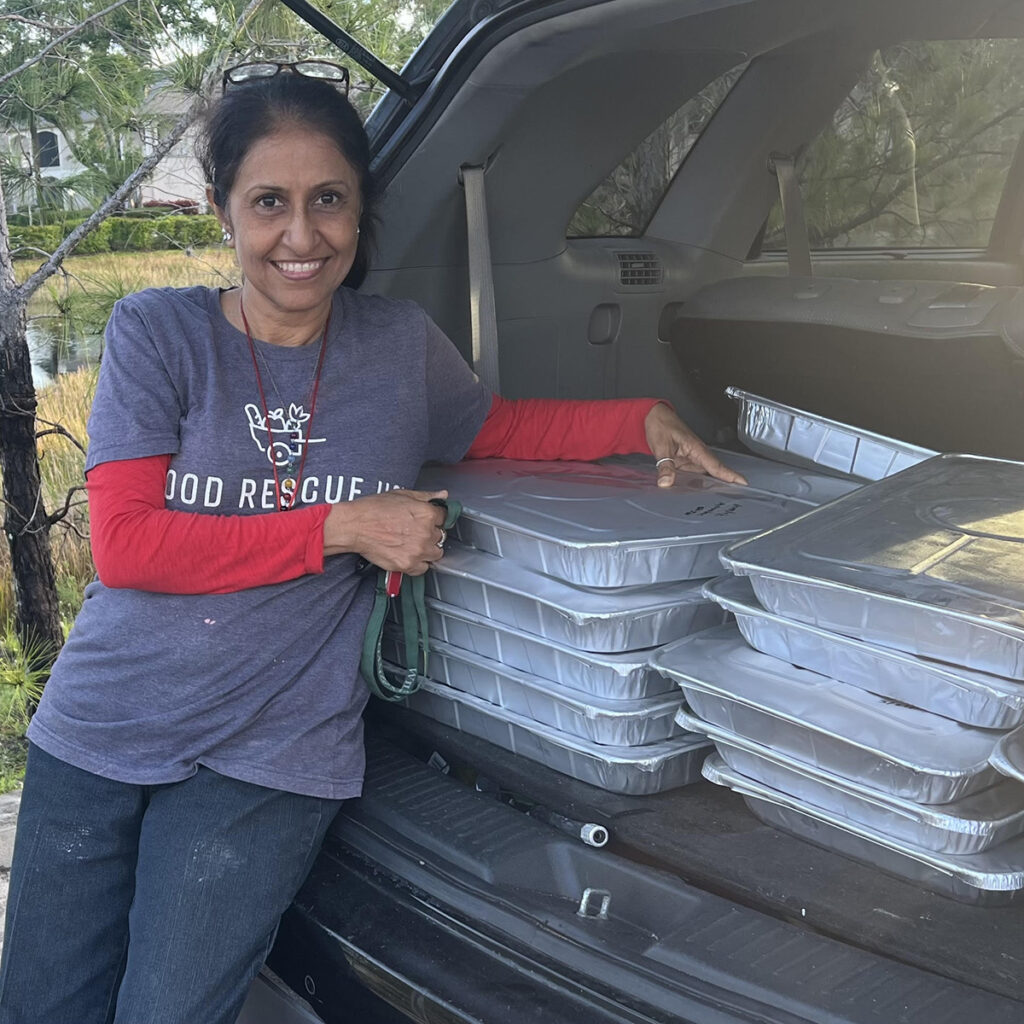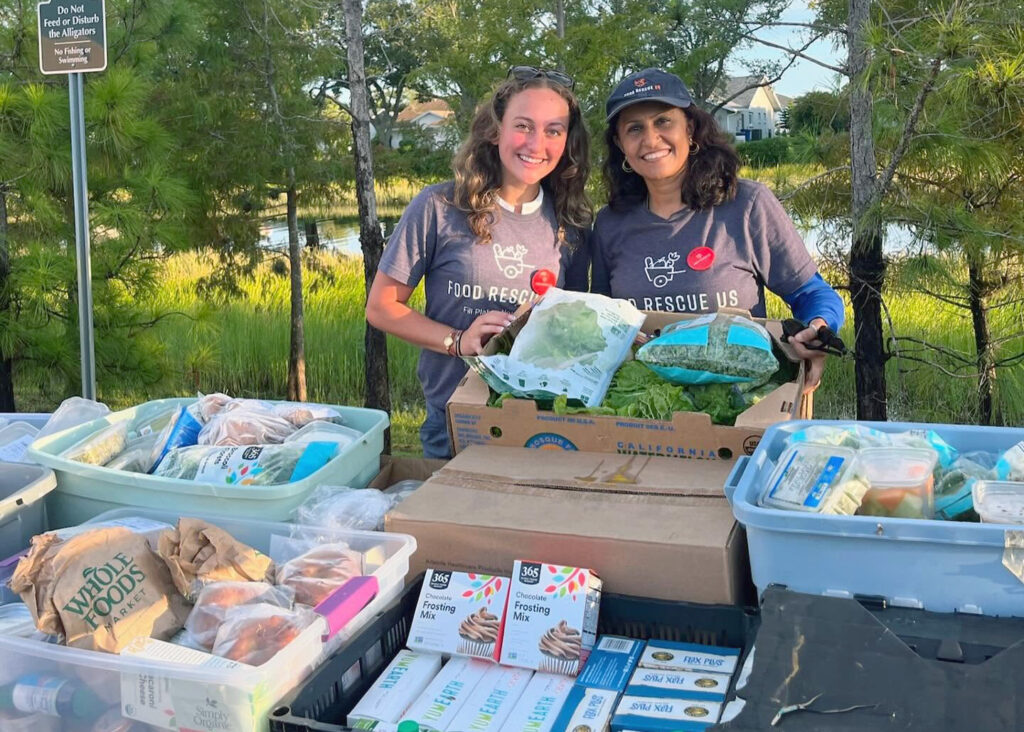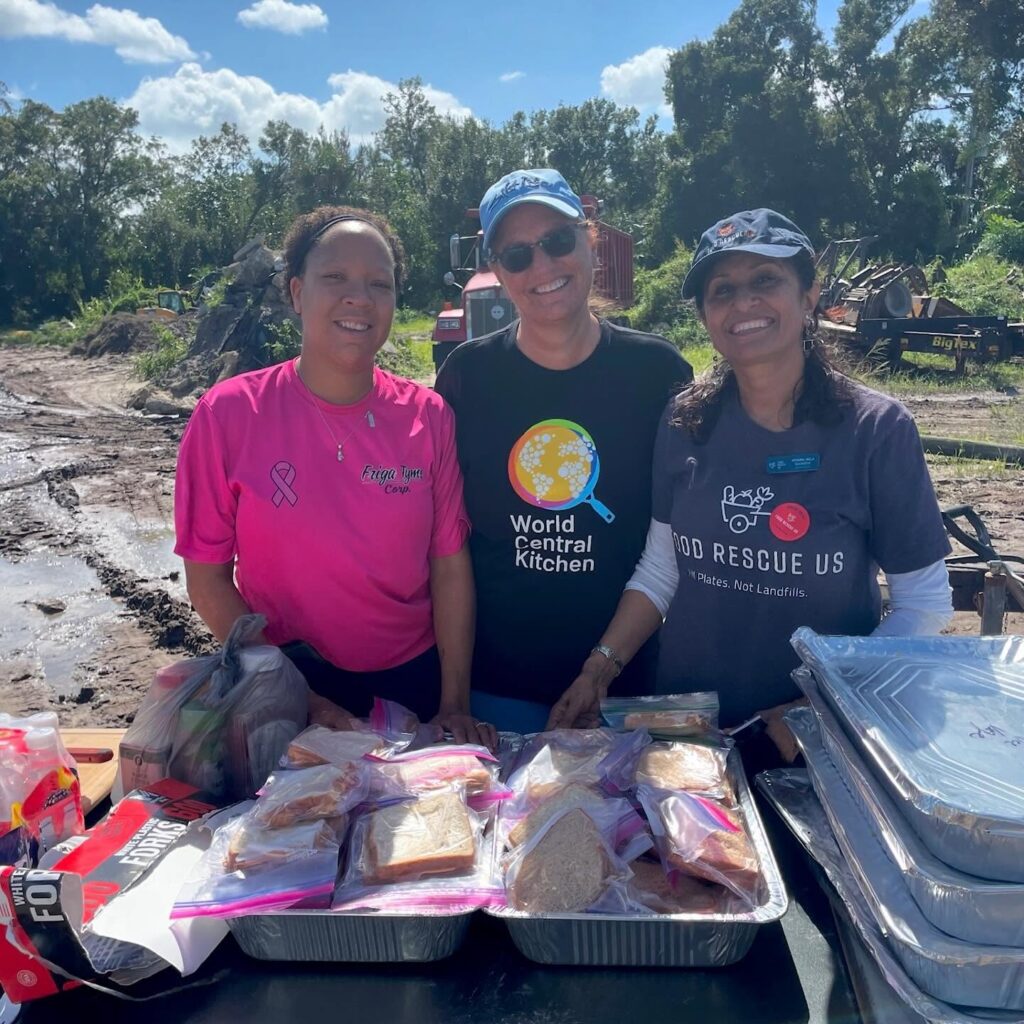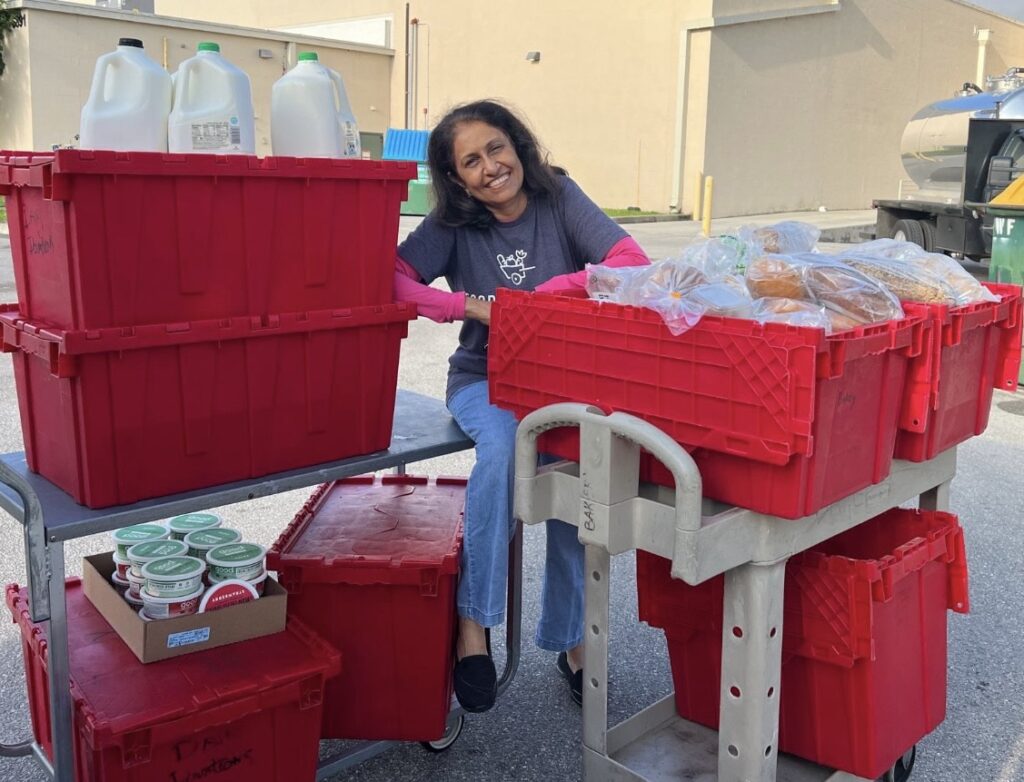5 Questions for Site Director Dr. Krishna Sachdeva
Meet the Food Rescue US Site Director Leading Food Rescue in Southwest Florida

Dr. Kris has always believed that good food should never go to waste—especially when so many people are hungry. As a nutritionist, chef, and longtime volunteer, she has spent years at the intersection of food, health, and community service, working to make sure surplus food finds its way to those who need it most.
Now, as the Site Director for Food Rescue US – Southwest Florida, Dr. Kris has built a thriving network of food donors and agency partners that rescues thousands of pounds of food each week, transforming what could have been waste into nourishment for her community. From forging partnerships with food donors to navigating the challenges of a seasonal population, her work is rooted in collaboration, adaptability, and a deep passion for feeding people.
In this Q&A, Dr. Kris shares how she got started, the unique ways her site operates, and the most rewarding parts of her day.
This article is a first in a new series where we will feature Food Rescue US Site Directors around the country.
Q: How did you get started doing this work? What’s your Food Rescue US origin story?
Dr. Kris: My journey with food rescue started long before I even knew it had a name.
I moved from India to Boston 33 years ago, working as a nutrition counselor and breastfeeding coordinator for WIC (Women, Infants, and Children). Beyond nutrition education, I loved giving cooking demos to help families make the most of the food available to them. That’s when my fascination with food pantries and food accessibility really took off.
Between my Master’s and PhD program, I took a one-year culinary program, which ignited my creativity with food. From there, my passion led me to volunteer at soup kitchens—a journey that continued even as my family moved across Europe and different states in the U.S.
Then, while working as a Raw Vegan Chef at an organic café, I saw firsthand just how much food was wasted every day. With the owner’s blessing, I started rescuing leftover food and delivering it to a nonprofit serving special-needs children and their families.
That moment changed everything.
I knew then that food rescue was my calling. My son and I researched organizations, sent out countless emails, and eventually found Food Rescue US. During a holiday in Denver, I shadowed a food rescuer and saw the impact firsthand. That was it—I was all in.Melissa from Food Rescue US responded and said, “Yes, we can support you in starting a site in Southwest Florida.” I jumped in, shadowed the Miami Site Director for a day, and six years later… here I am!

Q: What were the unexpected or creative food sources that helped make your site successful?
Dr. Kris: At first, building relationships was key. My first donor was a small French bakery, and I took their food to the Salvation Army. But I knew I needed to think bigger.
So, I flipped the script. Instead of just looking for grocery stores, I started rescuing surplus food FROM food pantries and redistributing it. Then, in a full-circle moment, the Salvation Army became one of my biggest donors. They received large shipments—sometimes more than they could handle—so I created a network to move their extra food to where it was needed most.
A major turning point came when Trader Joe’s opened in Fort Myers. Before their doors even officially opened, they reached out and started donating food. That partnership continues to this day.
Then, I connected with Food Donation Connection, linking us to major restaurants like Capital Grille, Outback Steakhouse, Wawa, and Olive Garden.

But the biggest catalyst for us in Southwest Florida was Hurricane Ian in 2022.
Our community took a direct hit—I lost my car, and we were without power and water for weeks. But Food Rescue US supported me so that we could continue rescuing food. Suddenly, grocery stores had tons of frozen and refrigerated food to donate before it spoiled, and people desperately needed food.
With special permission, we set up pop-up food distribution sites on roadsides—tables filled with groceries for anyone who needed them.
I also partnered with World Central Kitchen, picking up their leftover meals to redistribute to local shelters and food pantries. When one of the largest local pantries, Gladiolus Food Pantry, was destroyed by the storm, I stepped in to rescue their donations and coordinate large-scale pickups.
Hurricane Ian changed everything. It accelerated our growth, deepened our partnerships, and proved just how powerful food rescue can be in a crisis.
Q: What makes your site’s food rescue model unique?
Dr. Kris: Southwest Florida is unique because of its seasonal population. Many of our volunteers are part-time residents, making it tricky to build a stable volunteer base.
So, we got creative.
Instead of relying solely on individual volunteers, we invite our receiving agencies—food pantries, shelters, and community kitchens—to send their volunteers to pick up rescues.
This system works well because agencies have a vested interest in making sure food gets picked up. It also strengthens relationships between local organizations, and we can move food between them more quickly.
I also make it a point to stay personally involved. Every day, I meet volunteers at donation locations, ensuring that rescues are well-organized and distributed efficiently.
Q: What does a typical day look like for you as a site director?
Dr. Kris: No two days are ever the same—but every day starts with rescue missions.
I meet volunteers every day at grocery stores like Trader Joe’s and Whole Foods to collect donations. Then I’ll pick up surplus food from restaurants like Capital Grille, Wawa, or Outback Steakhouse, depending on the day.
Being there lets me strategize—finding ways to move food quickly to those who need it most.
The most rewarding part of my day is opening up those bins to see what has been donated this time. Every time, I have a spark in my eye and think, “What’s inside this time? Who can I channel it all to?”
Today Food Rescue is not only my passion but my life’s calling. This is what I love to do—and I wouldn’t trade it for anything. I’ve found my Life’s significance!

Are you curious about starting a food rescue program in your own community? Click here to learn more!
